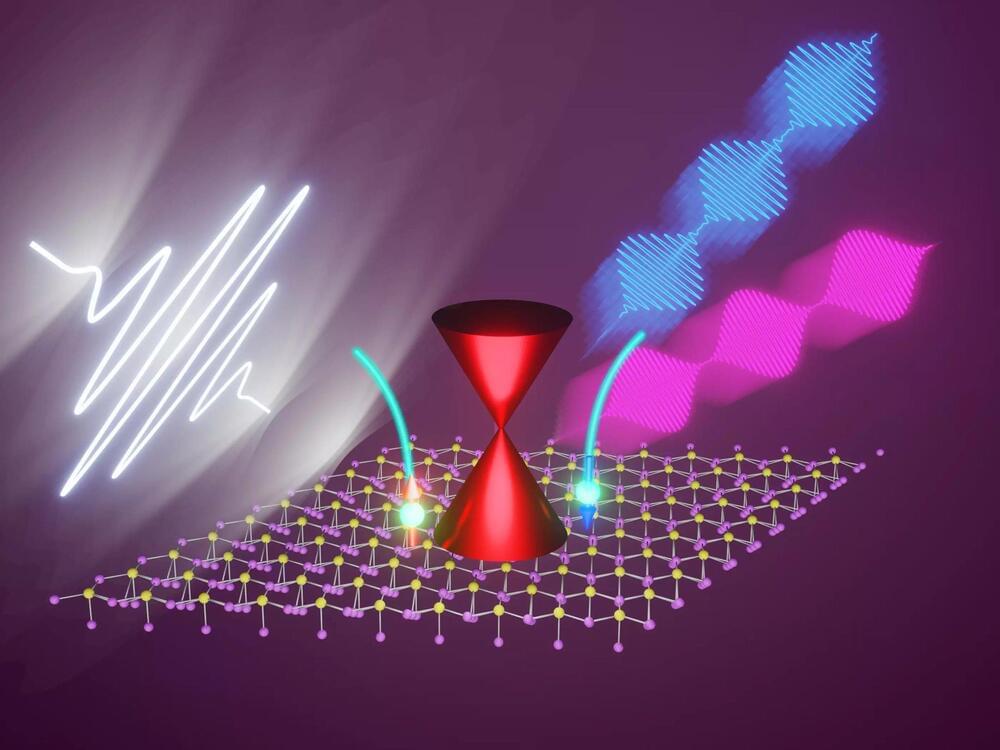Theoretical physicists at the Max Planck Institute for the Structure and Dynamics of Matter (MPSD) have demonstrated how the coupling between intense lasers, the motion of electrons, and their spin influences the emission of light on the ultrafast timescale.
Electrons, which are present in all kinds of matter, are charged particles and therefore react to the application of light. When an intense light field hits a solid, electrons experience a force, called the Lorentz force, that drives them and induces some exquisite dynamics reflecting the properties of the material. This, in turn, results in the emission of light by the electrons at various wavelengths, a well-known phenomenon called high-harmonic generation.
Exactly how the electrons move under the influence of the light field depends on a complex mixture of properties of the solid, including its symmetries, topology, and band structure, as well as the nature of the light pulse. Additionally, electrons are like spinning tops. They have a propensity to rotate either clockwise or counter-clockwise, a property called the “spin” of the electrons in quantum mechanics.
